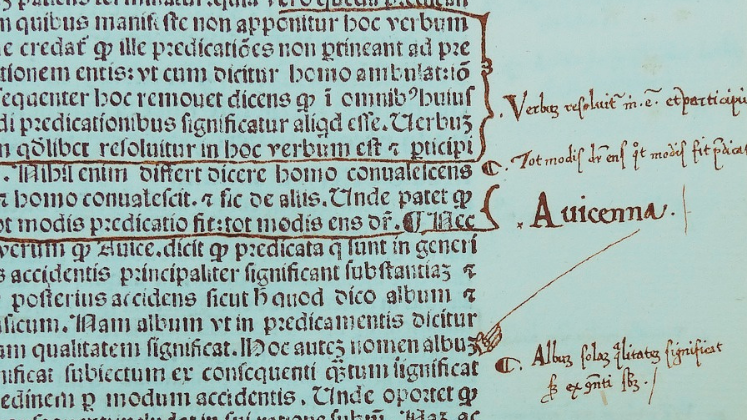In Tactical Publishing: Using Senses, Software, and Archives in the Twenty-First Century, Alessandro Ludovico assembles a vast repertoire of post-digital publications to make the case for their importance in shaping and proposing alternative directions for the current computational media landscape. Although tilting towards example over practical theory, Tactical Publishing is an inspiring resource for all scholars and practitioners interested in the critical potential of experimenting with the technologies, material structures, forms, practices, relationships, and socio-material spaces that emerge around books, writes Rebekka Kiesewetter.
 Tactical Publishing: Using Senses, Software, and Archives in the Twenty-First Century. Alessandro Ludovico. The MIT Press. 2024.
Tactical Publishing: Using Senses, Software, and Archives in the Twenty-First Century. Alessandro Ludovico. The MIT Press. 2024.
Working at the intersection of art, technology, and media, Alessandro Ludovico is known for his contribution to shaping the term “post-digital” through his book Post-Digital Print: The Mutation of Publishing Since 1894. Ludovico’s notion of the post-digital, in brief, challenges the divide between digital and physical realms by exploring the normalisation and ubiquity of the digital in contemporary culture and urges for a nuanced perspective beyond its novelty, as boundaries between online and offline experiences blur.
Tactical Publishing is presented as a sequel, evolving and updating Ludovico’s concept for the concerns of a contemporary computational media landscape shaped by technologies and platforms (social media, algorithms, mobile apps and virtual reality environments) owned by large multinational corporations. Through discussing a wide variety of antagonistically situated experimental and activist publishing initiatives, Ludovico discovers fresh roles and purposes for books, publishers, editors, and libraries at the centre of an alternative post-digital publishing system. This system diverges from the “calculated and networked quality of publishing between digital and print … to promote an intrinsic and explicitly cooperative structure that contrasts with the vertical, customer-oriented industry model” (p. 8).
Ludovico develops this argument around a captivating array of well and lesser known examples from the realms of analogue, digital, and post-digital publishing stretching the prevalent boundaries of what a book was, is, and can be. Ranging from Asger Jorn’s and Guy Debord’s sandpaper covered book Mémoirs (1958), to Nanni Balestrini’s computer generated poem “Tape Mark 1” (1961), to Newstweek (2011), a device for manipulating news created by Julian Oliver and Danja Vasiliev. Tactical Publishing also ventures into the complex relationships, practices, socio-political and economic contexts of the production and reception of books. It draws on these relational contexts to explore their disruptive potential. For example, through forms of “liminal librarianship” practiced by DIY libraries, networked archiving practices of historically underrepresented communities, and custodianship in the context of digital piracy.
Ludovico develops this argument around a captivating array of well and lesser known examples from the realms of analogue, digital, and post-digital publishing stretching the prevalent boundaries of what a book was, is, and can be
As in Post-Digital Print, Tactical Publishing offers an abundantly rich resource for scholars interested in exploring the ways in which experimenting with the manifold dimensions that make up books, can be a means for creative expression, intellectual exploration, and social change in the digital age. Ludovico dedicates considerable attention to these case studies, allowing them ample space to shine and speak by themselves in support of his argument.
The book is divided into six chapters, each mixing illustrative instances of practical application with theoretical reflection. Chapter one explores how reading is transformed by digital screens. These, as the author explains, tend to enforce industrially standardised experiences, while neutralising cultural differences and leading to a potential loss of sensory involvement. Ludovico proposes to reclaim enriched and multisensory reading experiences by combining digital tools and physical qualities. He illustrates this proposition by discussing a series of publishing experiments in music publishing that have used analogue and digital technologies to integrate text and music media.
Chapter two examines the transformation of the role of software in writing. Here, Ludovico presents a transition from an infrastructural to an authorial function that blurs distinctions between human and artificial “subjectivities”. The latter being a simulation of human-like experiences, characteristics, and behaviours often associated with human subjectivity, such as learning, decision-making, or emotional responses. This simulation Ludovico argues increasingly obstructs the ability to distinguish between actions and expressions originating from humans and those generated by technological systems. Ludovico contends that the “practice of constructing digital systems, processes, and infrastructures to deal with these new subjectivities can become a political matter” (p. 89). One that requires initiatives intertwining critical and responsible efforts in digitising knowledges, making digital knowledge-bases accessible and searchable, and developing and maintaining machine-based services on top of them. However, the origin and nature of these institutions, and what their efforts might entail remain unspecified.
Ludovico presents a transition from an infrastructural to an authorial function that blurs distinctions between human and artificial “subjectivities”.
Chapter three explores how post-truth arises from a constant construction and deconstruction of meaning in transient digital spaces, and through media and image manipulation. Ludovico emphasises that, in this context, it is important to build “an information dam … to protect our minds from being flooded with data, especially emotionally charged data” (p. 123). Chapter four, “Endlessness: The Digital Publishing Paradigm”, makes the case that the fragmented short formats characteristic of digital publishing underscore the importance of the archival role of print publications and the necessity of networks of “critical human editors” (p. 130). These can act as a counterbalance to this flood of information and foster a more focused and collaborative exchange of information.
Chapter five proposes a transformation of libraries from centralised towards distributed and networked knowledge infrastructures in which librarians strategically contribute to the selection and sharing of “relevant collections” (p. 197). Chapter six concludes Tactical Publishing synthesising the previous chapters by proposing the strategic integration of analogue and digital realms within an “open media continuum” rejecting a calculated, networked approach in favour of a cooperative structure sustained by “responsible editors” (p. 212), publishers, librarians, custodians, and distributors. Last but not least, a useful appendix offers a selection of one hundred publications, encompassing both print and digital formats.
Tactical Publishing sits within a well-established canon of critical media studies, digital humanities, and cultural studies, focusing on the materiality of media, historical dimensions of technology, media ecology, politics of information, and socio-cultural implications of post-digital communication. However, its theoretical contributions are at times subdued by the host of examples presented. Some readers may also be left wanting a more pronounced engagement with recent theoretical works discussing the concept of post-digital publishing and its interventionist potential into dominant publishing systems, norms, and cultures from cultural hegemony critical, post-Marxist, various feminist, post-hegemonic, and ecologically-minded perspectives. Such an engagement might have helped clarify questions about the politics and ethics related to the alternative post-digital publishing system and the “comprehensive liberatory attitude” (p.4) Ludovico advocates for, beyond the motivation to counter the alienation of the current computational media landscape.
Tactical Publishing sits within a well-established canon of critical media studies, digital humanities, and cultural studies, focusing on the materiality of media, historical dimensions of technology, media ecology, politics of information, and socio-cultural implications of post-digital communication.
Similarly, Tactical Publishing also leaves unresolved related questions of positionality, accountability, and agency. For example: Who is the “we “Ludovico addresses, not least in the final chapter titled “How we Should Publish in the 21st Century”? What drives “the critical human editors” (p. 130) whose role is to “filter the myriad of sources, to preserve their heterogeneity, to … include new sources, but to keep their final number limited, and to confirm them, transparently acknowledged, in order to strengthen trusted networks” (p. 211), and what legitimises their activity? And where, in a post-digital world, is “the personal trusted human network” situated that, according to the author, can be “resistant to mass manipulation by fake news and post-truth strategies” (p. 123)?
However, despite (or exactly because) the theoretical argument occasionally takes a backseat to numerous meticulously selected and well-arranged examples, Tactical Publishing is an inspiring resource for all scholars and practitioners in design, the arts, humanities, and social sciences that are interested in the ways in which experimental publishing can help question, challenge and rearrange dominant publishing systems.
The content generated on this blog is for information purposes only. This Article gives the views and opinions of the authors and does not reflect the views and opinions of the Impact of Social Science blog (the blog), nor of the London School of Economics and Political Science. Please review our comments policy if you have any concerns on posting a comment below.







